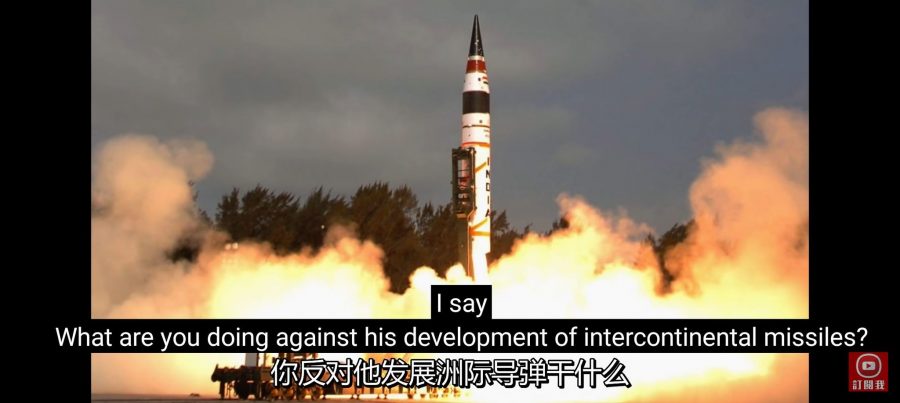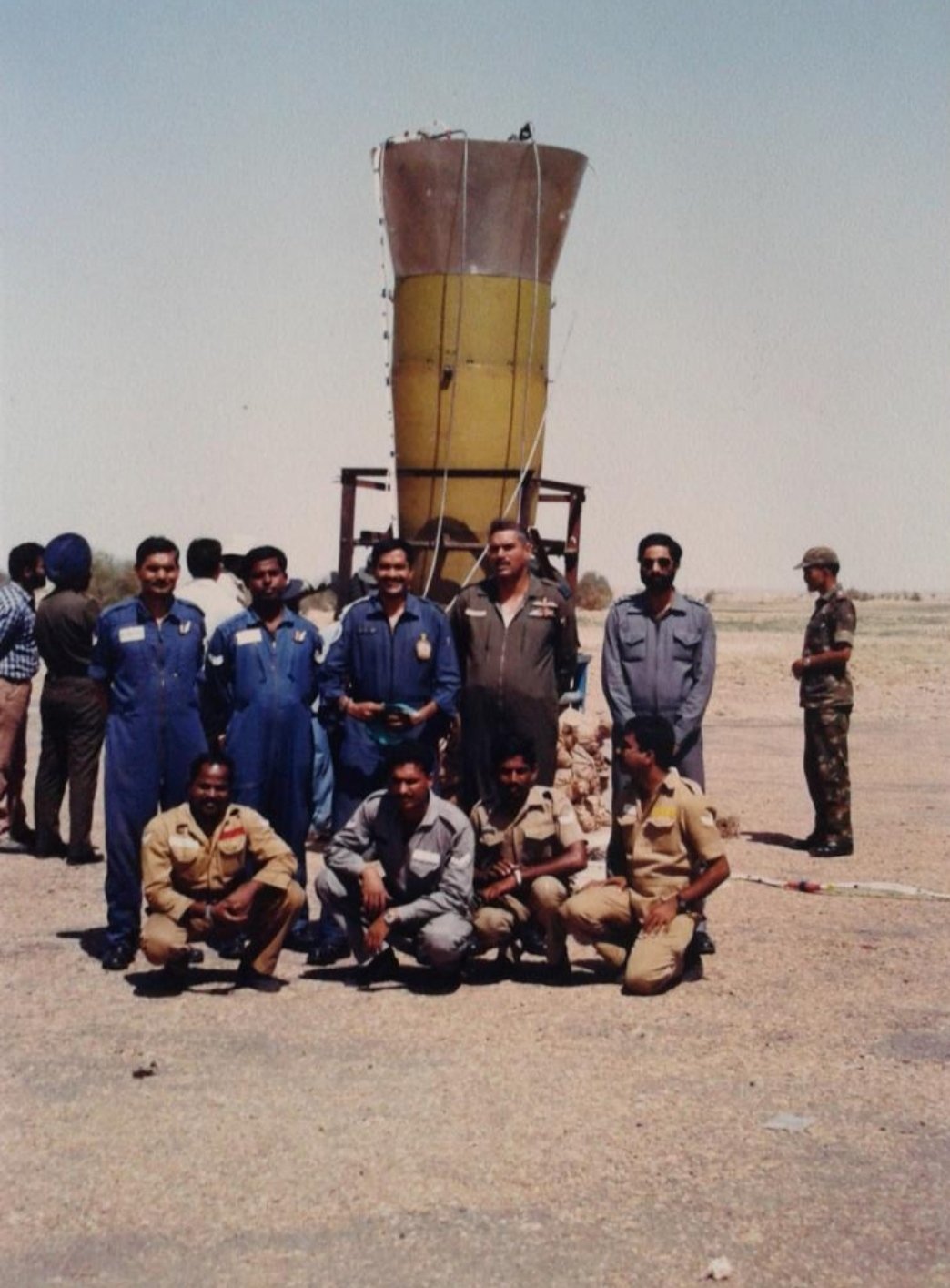India, on June 15, successfully carried out the night launch of its indigenously developed nuclear-capable Prithvi-II missile from an Integrated Test Centre in Odisha.
Lagging Behind China In Hypersonic Race, Report Reveals Grim Realities Of Grounded US Military Aircraft
The Defence Ministry stated that the missile met all operational and technical parameters.
The Ministry, in a statement, said, “the short-range ballistic missile Prithvi-2 was tested-fired on June 15 at around 7.30 pm from an Integrated Test Centre at Chandipur, Odisha.”
Previously, Prithvi-II was successfully launched from the ITR in Chandipur on February 21, 2018. Later, on November 20, 2019, two successive Prithvi-II trials were accomplished from the same base.
Short-Range Ballistic Missile, #Prithvi-II, successfully tested.
The missile is a proven system and is capable of striking targets with a very high degree of precision. pic.twitter.com/sFVAr0RfiR
— DD News (@DDNewslive) June 16, 2022
The Prithvi missile is a proven system that can hit targets with pinpoint accuracy. Even in the latest test, the launch successfully validated the missile’s operational and technical characteristics.
In 2003, this missile was inducted by the Strategic Forces Command (SFC) to boost the country’s nuclear arsenal. Notably, it is India’s first missile produced under the Integrated Guided Missile Development Program.
The Ministry of Defence started the program to carry out extensive research and develop nuclear-capable missiles.
These types of tests are conducted by choosing missiles at random from India’s overall military arsenal and production stock. This is done to assess India’s progress and emergency preparedness in the event of a warlike situation.
In a similar line, Lt Col JS Sodhi (Retd), Defence & Strategic Affairs Analyst told the EurAsian Times “Routine missile tests are required to check the efficacy and effectiveness of the weapon systems being developed so that in case of any mid-course corrections, the same can be carried out as developing a missile is time and cost heavy and neither wastage of time or money is desirable in regards to the security of the nation.”

The test comes nearly ten days after India conducted a routine test of its nuclear-capable Agni missile. After the “routine user training” launch test of Agni-IV, the government had said that the successful test “reaffirms India’s policy of having a Credible Minimum Deterrence Capability.”
Don McLain Gill, a Philippines-based geopolitical analyst and author, outlined the three key reasons for the recent back-to-back missile launches and their significance for India.
First, he emphasized India’s desire to improve and develop its current and future missile capabilities, saying, “The late Chief of Defense Staff, General Bipin Rawat emphasized the need for India to develop a credible rocket force to not only balance or offset China’s capabilities in the same field but also to maintain the South Asian state’s leverage vis-à-vis the shifts taking place in the global security architecture.”
“Moreover, given the intricacy of missile development, routine tests are necessary to ensure that all potential snags are ironed out,” he added.
Second, these tests come at a time when China and Pakistan are bolstering their cooperation while also attempting to counterbalance and check India’s influence, territorial integrity, and leadership role in the Indo-Pacific.
McLain Gill told the EurAsian Times – “India is situated in perhaps the most complicated geographical neighborhood, sandwiched between two assertive nuclear powers that seek to nibble on its territory on multiple fronts.”
“Given the complications of this security environment, as China’s military capabilities continue to grow at an exponential rate, India must continue to improve its deterrence capabilities to illustrate that at a time of conflict, it can also inflict damage that will be costly for the other state. Thus, routine tests and the constant efforts to modernize are very important for India given the current geopolitical conditions,” he noted.
The third aspect addresses India’s growing importance as a security provider. The Prithvi and the Agni are two of India’s indigenously developed missiles.
Taking this into consideration, McLain Gill stated that the successful tests not only demonstrate India’s national security achievements but also serve as a significant development for other Indo-Pacific countries that are continuously trying to improve and expand their military capabilities given the unfolding geopolitical dynamics.
“The recent BrahMos sale to the Philippines and similar deals that are expected to materialize with Indonesia and Vietnam add to this very momentum. The need for India to improve its technological capacity and solidify its indigenization process will be crucial in the years to come in order to emphasize its role as a reliable and effective security provider throughout the Indo-Pacific and beyond,” he added.

Prithvi Vs. Agni Missile
As previously mentioned, the Prithvi ballistic missile is the first indigenously-built ballistic missile developed by the Defence Research and Development Organisation (DRDO) under the Integrated Guided Missile Development Program.
It’s a road-mobile short-range ballistic missile (SRBM), with the first two variants being single-stage, two engines, and liquid fuel. The development of this missile began in 1983 and was first fired on February 25, 1988. There are three versions of the Prithvi missile.
“Prithvi being a nuclear-capable missile will have enough deterrence value for both Pakistan and China as the targets located in these two countries within the range of Prithvi can be easily targeted,” Lt Col JS Sodhi (Retd) added.
Similarly, the DRDO also developed the Agni series of ballistic missiles under the Integrated Guided Missile Development Program.
This series includes missiles capable of hitting targets varying from Short/Intermediate to long-range. The Agni missile was first launched in May 1989, a year after the Prithvi missile. It is a two-stage missile, with the first stage utilizing the first-stage solid-fuel booster motor of the SLV-3 satellite launch vehicle.
According to Lt Col JS Sodhi (Retd), “The biggest difference between Prithvi & Agni missiles is the distance and the payload capacity. While Prithvi has a range of 150-500 km, Agni-V has a range of 5500-8000 km. Prithvi carries a warhead of 500-1000 kg while Agni carries a warhead of 1500 kg.”
Prithvi Missile Series
India possesses three variants of Prithvi missiles: Prithvi-I with a range of 150 kilometers, Prithvi-II with a range of 250 kilometers, and Prithvi-III with a range of 350 kilometers.
The Prithvi I class is a surface-to-surface missile with a range of 150 kilometers and a maximum warhead mounting capability of 1,000 kilograms. It can be launched using transporter erector launchers and has a 10–50 m accuracy. The Indian Army fielded this class of Prithvi missile in 1994.
Apparently, the engine for the missile was derived from the Soviet S-75 surface-to-air missile. The Army began user testing of the Prithvi I in June 1994, following a successful flight test in 1993.
The missile was formally brought into service by India in 1996. Between 1988 and 1999, India is said to have conducted at least 16 flight tests on the Prithvi. It can strike a quarter of Pakistan’s territory, including Islamabad and most other important cities.

Prithvi-2 is a liquid-fueled single-stage missile with a maximum warhead mounting capability of 500 kilograms and a 250 kilometers (160 mi) range.
However, according to reports, the range has been increased to 350 kilometers, and the payload capacity has also been increased to 500 to 1000 kilograms. The Indian Air Force is the primary user of this missile.
The missile was first launched on January 27, 1996, and the last stages of development were completed in 2004. The missile has anti-ballistic missile deception characteristics. The Prithvi-2 missile is also capable of carrying nuclear weapons and offers the capability to strike the enemy at any time of day or night.
This missile has undergone surface-to-surface testing. This variant has the capability to strike at least half of Pakistan, including practically all key military targets and cities.
The Prithvi III class (codenamed Dhanush, which means “bow”) is a ship-to-surface missile with two stages. The first stage is solid-fueled and has a thrust motor with a force of 16 metric tonnes (157 kN). Liquid fuel is used in the second step. This variant has a 350 km range and a 1,000 kg payload capability.
Dhanush is a system that consists of a missile and a stabilizing platform. It is a modified Prithvi that has been certified for seaworthiness. The missile should be launched from a launch pad that is hydraulically stabilized. The missile has been tested several times by naval surface ships.
The Sukanya class patrol vessel INS Subhadra was used to test Prithvi III for the first time in 2000. The 250 km variant’s first flight test was only partially successful. ]
In 2004, the full operational testing was completed. In December of the following year, an improved 350 km version of the missile was successfully launched from the INS Rajput and targeted a land-based target.
Agni Missile Series
Meanwhile, the Agni series comprises five missile versions, with a sixth in the pipeline. Agni-P, an advanced variant of the Agni Missile Class, is also in its developmental phase.

The Agni-I is a ballistic missile with a short to intermediate range. The missile ranges from 700km to 800km and can deliver a conventional payload of 1,000 kilograms or a nuclear warhead.
These are fueled by solid propellants and transported by rail and road. A nuclear-capable Agni-I was fired from Wheeler Island in March 2010.
The Agni-II is a medium-range ballistic missile with two solid-fuel stages. The missile can strike most of China’s western, central, and southern regions.
It is a road/rail-mobile launch missile with a 1,000-kilogram payload, often a 150 kT or 200 kT nuclear bomb, and an accuracy of 40m CEP. It can also be outfitted with standard high-explosive bombs.
The Agni-III was launched from Wheeler Island in July 2006 but failed to reach its target. In April 2007, it was successfully tested. This test, according to New Delhi, confirmed India’s nuclear reach & deterrence as the missile can accurately hit targets at distances more than 3000 km away.
Agni-IV is a nuclear-capable intermediate-range ballistic missile with two stages. The missile was initially tested from Wheeler Island in November 2011. During the test, it reached an altitude of 900 kilometers. In September 2012, it was successfully tested again.
During its third test in January 2014, it achieved a height of 850 kilometers. The Agni-IV is 20 meters long and weighs 17 tons. It has a payload capacity of 800kg. The missile’s maximum range is 4,000 kilometers.
Agni-V, India’s only Intercontinental Ballistic Missile (ICBM), is still developing. Although the declared range of Agni-V is 5,500-5,800 kilometers, defense analysts believe it may easily be increased to at least 8,000 kilometers. The missile is a three-stage solid-fueled missile that can carry up to 10 MIRVs.
The missile is 17.5-20 meters long, 2-2.2 meters broad, and weighs 49,000-55,000 kilograms at launch. While no official information on the type of payload Agni-V would carry has been released, all such weapons with other countries are nuclear-tipped.
- Contact the author at ashishmichel@gmail.com
- Follow EurAsian Times on Google News




